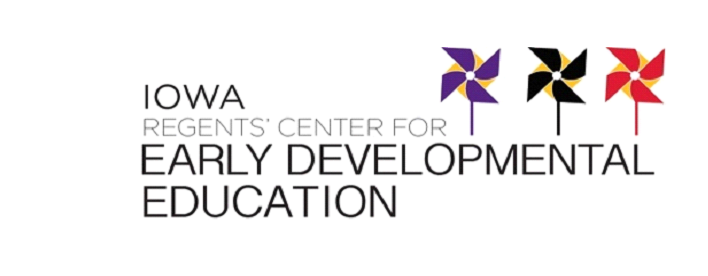Odd Card is very similar to the familiar game Old Maid. However, instead of making pairs of matching cards, children make pairs of cards that add up to 10. The 4 sets of numbers 1-9 form 18 pairs of cards that add up to 10. Removing one card before dealing means that one card will always be left over, hence, the name Odd Card. When one card is removed from the deck, the remaining 35 cards can only be dealt out equally if 5 or 7 children play. If this becomes a problem, change the rules so that exactly 5 players must be playing. This game gives children numerous opportunities to make 10's combinations with 2 cards. Teachers are encouraged to draw attention to the card that was removed (it does not have to be kept secret). For example, the teacher may say a 2 was removed. What card do you think will be the odd card this time? Children enjoy trying to find the match to the odd card, so that they are not left with it at the end of the game.
Notice the rules do not refer to the person with the odd card at the end of the game as the loser.
Recommended # of Players: 3 - 6
Click here to download the game.
Standards Addressed
Head Start Standards
Social Relationships
- Communicates with familiar adults and accepts or requests guidance.
- Cooperates with others.
- Develops friendships with peers.
- Establishes secure relationships with adults.
- Uses socially appropriate behavior with peers and adults, such as helping, sharing, and taking turns.
- Resolves conflict with peers alone and/or with adult intervention as appropriate.
- Recognizes and labels other's emotions.
- Expresses empathy and sympathy to peers.
- Recognizes how actions affect others and accepts consequences of one's actions.
Self-Concept & Self-Efficacy
- Demonstrates age-appropriate independence in a range of activities, routines, and tasks.
- Demonstrates age-appropriate independence in decision making regarding activities and materials.
Self-Regulation
- Recognizes and labels emotions.
- Handles impulses and behavior with minimal direction from adults.
- Follows simple rules, routines, and directions.
Emotional & Behavioral Health
- Expresses a range of emotions appropriately, such as excitement, happiness, sadness, and fear.
- Refrains from disruptive, aggressive, angry, or defiant behaviors.
- Adapts to new environments with appropriate emotions and behaviors.
Approaches to Learning
Initiative and Curiosity
- Demonstrates flexibility, imagination, and inventiveness in approaching tasks and activities.
- Asks questions and seeks new information.
Persistence & Attentiveness
- Maintains interest in a project or activity until completed.
- Resists distractions, maintains attention, and continues the task at hand through frustration or challenges.
Cooperation
- Plans, initiates, and completes learning activities with peers.
- Joins in cooperative play with others and invites others to play.
- Models or teaches peers.
- Helps, shares, and cooperates in a group.
Logic and Reasoning
Reasoning & Problem Solving
- Seeks multiple solutions to a question, task, or problem.
- Recognizes cause and effect relationships.
- Classifies, compares, and contrasts objects, events, and experiences.
- Uses past knowledge to build new knowledge
Language Development
Receptive Language
- Attends to language during conversations, songs, stories, or other learning experiences.
Expressive Language
- Engages in communication and conversation with others.
- Uses language to express ideas and needs.
- Engages in conversations with peers and adults
Mathematics Knowledge and Skills
Number Relationships & Operations
- Uses a range of strategies, such as counting, subtilizing, or matching, to compare quantity in two sets of objects and describes the comparison with terms, such as more, less, greater than, fewer, or equal to.
- Recognizes that numbers (or sets of objects) can be combined or separated to make another number through the grouping of objects.
- Identifies the new number created when numbers are combined or separated.
Patterns
- Sorts, classifies, and serializes (puts in a pattern) objects using attributes, such as color, shape, or size.
- Recognizes, duplicates, and extends simple patterns.
Common Core Standards
Kindergarten
Know number names and the count sequence.
- K.CC.1. Count to 100 by ones and by tens.
- K.CC.2. Count forward beginning from a given number within the known sequence (instead of having to begin at 1).
Count to tell the number of objects.
- K.CC.4. Understand the relationship between numbers and quantities; connect counting to cardinality.
- When counting objects, say the number names in the standard order, pairing each object with one and only one number name and each number name with one and only one object.
- Understand that the last number name said tells the number of objects counted. The number of objects is the same regardless of their arrangement or the order in which they were counted.
- Understand that each successive number name refers to a quantity that is one larger.
Compare numbers
- K.CC.6. Identify whether the number of objects in one group is greater than, less than, or equal to the number of objects in another group, e.g., by using matching and counting strategies.
Classify objects and count the number of objects in each category.
- K.MD.3. Classify objects into given categories; count the numbers of objects in each category and sort the categories by count.

